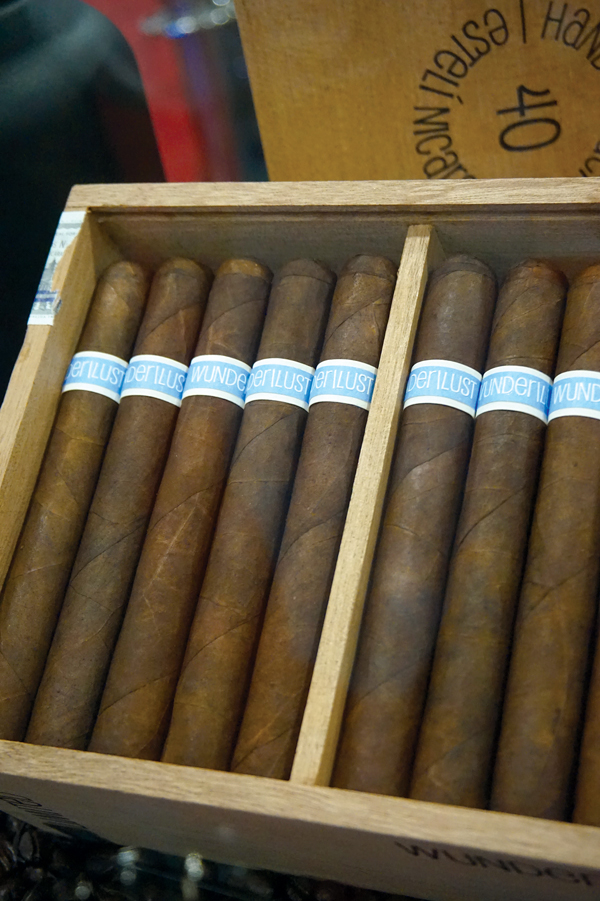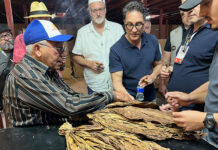“Quality requires attention and patience. Patience costs you time. Time costs you money. In the end, my primary role in my business is to build and maintain a culture where taking shortcuts is unacceptable, and constantly moving toward an unobtainable standard of perfection is the focus,” Martin explains. “For a number of growing companies, it’s primarily viewed as a financial concern. Quality frequently becomes a trade-off in the pursuit to grow market share, control costs or increase profits. We focus on being extremely efficient. Our efficiency allows us to pursue and maintain both quality and profitability.”
Martin says that making a consistently great cigar is less about magic tobacco and secret processes and more about consistently making the hard decisions and financial investments required to always use high-quality tobacco and maintain quality in the processes required to produce cigars in the right way. If the right decisions and investments are made, a company should expect success, which cannot be achieved but rather maintained, according to Martin.
 A Winning Strategy
A Winning Strategy
Since its launch eight years ago, RoMa Craft Tobac’s marketing plan has been centered on offering a differentiated tobacco product at a fair price and the dynamic that exists within the smoking community that enjoys its cigars. Where other companies have lofty goals and profit targets that drive their marketing initiatives, RoMa Craft Tobac has taken a simpler approach and instead has worked toward meeting the demand for its products generated by word-of-mouth. The company scaled as demand grew, taking an organic approach to growth that has kept it operating within its means and helped it to remain a relevant player in the overall competitive cigar market. Martin attributes much of the company’s success in business to the team he and Rosales have assembled over the years.
“We are a fairly young company, but to the extent that we are where we are after almost nine years is a testament to the team we have built,” says Martin. “We have almost 70 employees at the factory in Esteli and four employees in Austin, [Texas]. In our entire history, there are less than 10 people that have worked with us that no longer do. That is an amazing number. It has become almost cliché, but our people are our strength. At every level, we have built a team of people with a sense of ownership in our mission. We take care of them. They take care of us. We all take care of our customers. It doesn’t hurt that we make some of the best cigars being sold in the world today.”
Part of RoMa Craft Tobac’s success can also be attributed to its retail partners. The company currently has between 250 to 300 retailers it partners with, and it has relied on its consumers to select the retail outlets where its products are carried. The company’s focus has always been on making good cigars that are sold at a fair price. RoMa Craft Tobac started by selling to the retailers that it noticed consumers were talking about the most, then it began selling to the retailers that supported its consumer following.
“We have high standards for ourselves and for those that represent us, and we actively maintain those standards by adding or eliminating retailers when it’s the right thing to do,” says Martin.
When it comes to products, keep it simple, Martin suggests. He knows that for many in the tobacco industry, innovation often refers to new products, but due to the regulations imposed by the FDA, that has nearly come to an end. RoMa Craft Tobac released its first cigar lines—CroMagnon and Aquitaine—in 2011. Intemperance BA XXI and EC XVIII followed in 2012. Craft came in 2013. Neanderthal came in 2014. Wunder|Lust and Intemperance WR 1794 came in 2016. Every product the company has introduced is still produced and available today. While the industry may not see much innovation in terms of new products, Martin believes innovation is still achievable in other processes of the business, including curing and fermentation processes and technological advances that have changed how and where products can be sold and marketed to consumers.
This story first appeared in the July/August 2019 issue of Tobacco Business magazine. Members of the tobacco industry are eligible for a complimentary subscription to our magazine. Click here for details.
– Story by Antoine Reid, senior editor and digital content director for Tobacco Business Magazine. You can follow him on Instagram @editor.reid.







